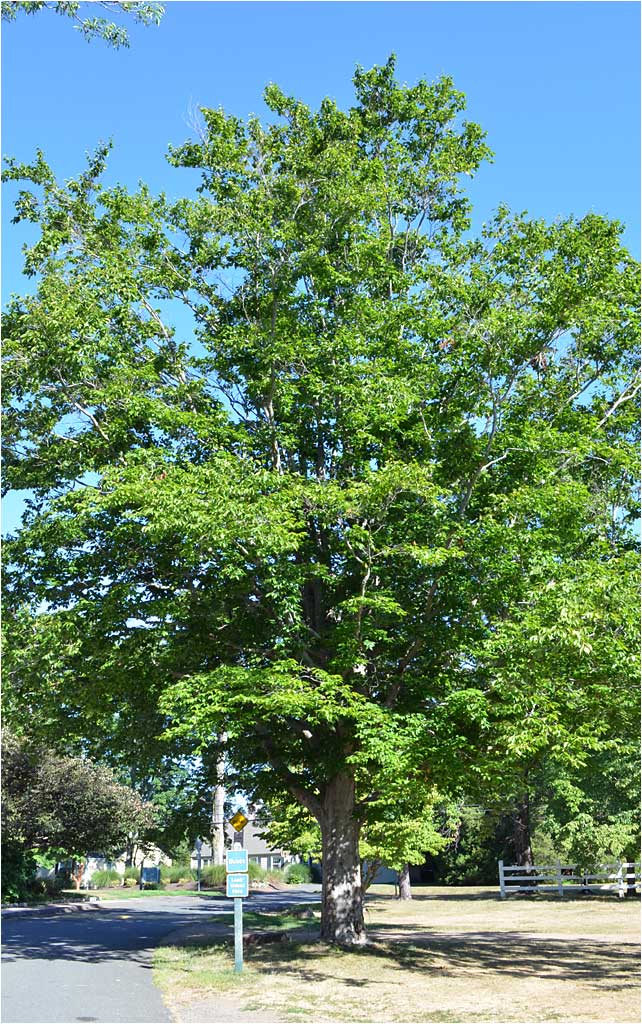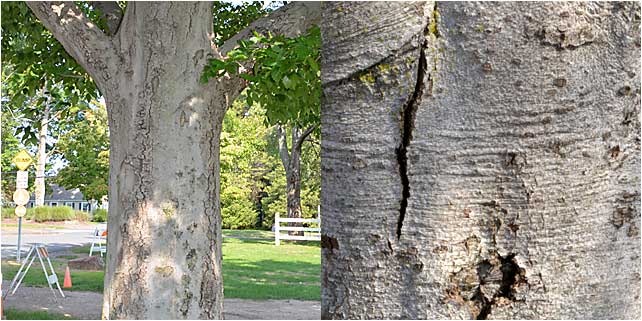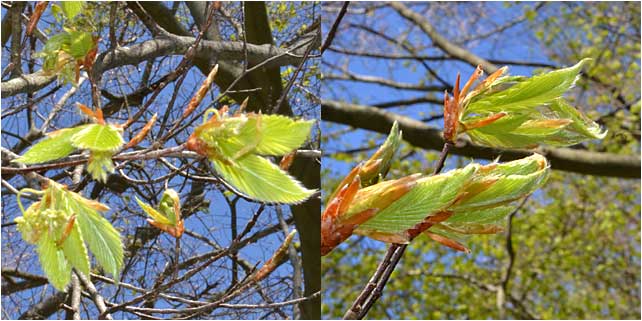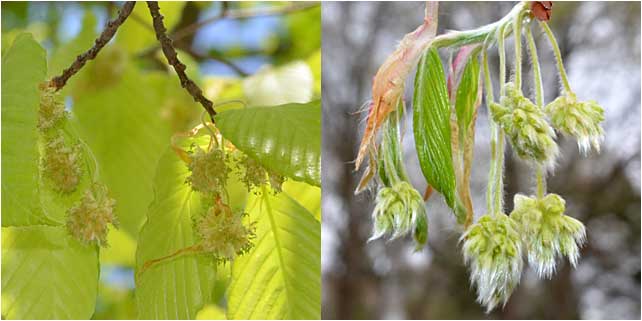3. AMERICAN BEECH
Fagus grandifolia

The American Beech tree is one of the most popular shade trees in our eastern U.S. landscape.
BARK

Beech tree bark is smooth, gray, and quite distinctive. Up close it has all the features and ridging of traditional bark but appears very smooth from a few feet away.
LEAF & BUD

The leaf is a smaller version of the Chestnut leaf but the edges are not as serrated. Beeches, oaks, and chestnuts all belong to the Beech family, Fagaceae. The buds are long, narrow, and colorful.
SPRING, BUD & LEAF

Early Spring arrives with a riot of color and growth for Beeches. The slender buds enlarge and produce both flowers and leaves. The early emergence of leaves is shown here.
BEECH FLOWERS

Beech trees are monoecious (Male/Female flowers on the same tree). Female flowers (left) and male flowers (right). The male flowers are quite striking and are only on the tree for a few short weeks as the leaves first appear.
BEECH NUTS

The nuts begin as flowers in the spring (left), and if fertilized will grow into nuts during the summer (center) and mature to brown in the fall. The nuts are rich in fat and protein (much more than acorns) and are prized by wildlife.
WINTER

The American Beech stands sentinel against the wintry backdrop and demonstrates its strong, symmetrical branch structure. Most beech trees retain some of their leaves through the winter (inset), particularly on the lower branches. This leaf retention is known as "marcescence".